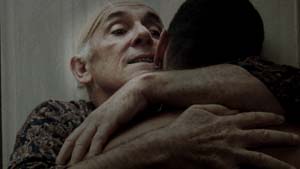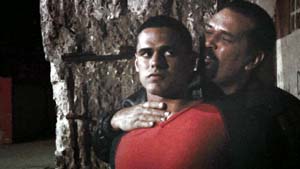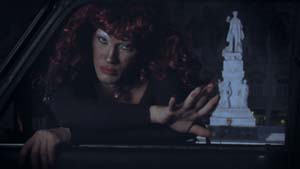The film, based on the theatrical script of the same name by Abel Gonzalez Melo, will finally be shown in June on the first- run cinema circuit.

By Marta María Ramírez
A CubaNews translation by David Fagan. Edited by Walter Lippmann.
After two years being circulated independently throughout the island in low-quality pirated copies, “Chamaco,” directed by Juan Carlos Cremata, has it’s official premiere as part of the programming of the Cuban Institute of Cinematic Industry and Arts (ICAIC.)

Set amongst the nightlife of Havana, “Chamaco” penetrates the gay underground world, male prostitution and corruption, the consequences of homophobia and the economic crisis.
“With this film I not only champion the struggle against homophobia but also the idea that one can make films outside of ICAIC and that this should be welcomed,” said Cremata. He added that, “it is odd to programme an official premiere of “Chamaco” when so many people have already seen it.”
ICAIC has had to accept independent productions, generated by a democratisation that has combined with the erupting of digital technology in Cuban audio-visual arts.
According to the producer, the final version of “Chamaco” is a far cry from the pirated copies that have been circulated by hand throughout Cuba.
“In reality, it has not been seen. Unfortunately a badly-copied pirate version slipped out and it was not possible to stop that until I won the ALBA Premio Cultural Latinamerica Primera Copia (ALBA Prize for Latin American and Caribbean In-Progress Film-Making) at the 32nd International Festival of New Latin American Cinema in Habana in 2010.
Although chronologically “Chamaco” should officially be shown before more recent productions such as “Fabula,” “Verde Verde” and “Juan de los Muertos”, the director maintains that the cause of the delay had nothing to do with the issues dealt with but that it hit a number of problems related to its production.
From the existence of films, such as “Casa Vieja” and “Fabula” and “Verde Verde” that he highlighted, Cremata confirmed the existence of a Cuban gay cinema.
“It exists and increasingly shows evidence of its existence. Not only with “Verde Verde,” “Fabula” and “Chamaco, but with many others, in which homosexuals do not appear simply as characters, but as the theme, something which is increasingly recurrent,” he affirmed.
For the Cuban producer, the appearance of this type of cinematography, “is important because of the extent to which the sorts of things that are spoken of and discussed, exist.”
“When one conceals or denies such things from one’s self the problems and traumas that we see in “Chamaco” appear.
Cremata includes in his list of gay films, “Fresa y Chocolate” (“Strawberry and Chocolate”) although Senel Paz, who wrote the screenplay and its directors Tomás Gutiérrez Alea and Juan Carlos Tabio, proposed to go beyond discrimination on the basis of sexual orientation.
“Fresa y Chocolate” is not one of my favourites, but I believe that it has the great merit of having initiated the topic in Cuba and it was the ‘voice of the people’,” the producer said.
In this sense, he stressed that the value of “Fresa y Chocolate” lay in converting “into public discussion something that had been spoken of in hushed tones and hidden.”
“The Cuban cinema-going public is of the opinion that today “there is much more freedom to speak, not only politically, but socially, about these themes. People are more likely to express an opinion and cinema has to speak about that which the people speak.”
From:
WebCENESEX <diversidadsexual@listas.sld.cu>
[Add
to Address Book]
To: diversidadsexual@listas.sld.cu
Subject: Chamaco: cine gay a la cubana
Date: Jun 10, 2012 8:04 AM
Attachments:
image001.jpg
image002.jpg
image003.jpg
unknown-225 B
|
Chamaco: cine gay a la cubana |
http://www.cenesexualidad.sld.cu/chamaco-cine-gay-la-cubana
